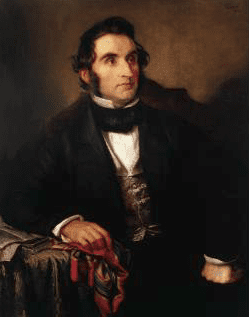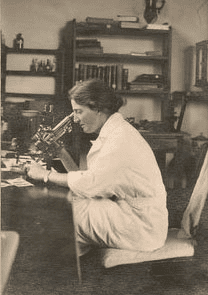James L. Franklin
Chicago, Illinois, United States

On a recent visit to Botswana in southern Africa, the author was introduced to a food spread known as Marmite.* Apparently very popular in Africa, a distinctive jar of this condiment was present on the table at every meal. Our South African Apex Expedition guide, Liam Rainier, a consummate naturalist, added Marmite to his buttered toast which he consumed with great gusto every morning for breakfast. While on the very long flight home from southern Africa with fresh visions of leopards and lions stalking their prey in the Kalahari Desert, I passed the hours reading Siddartha Mukherjee’s magisterial biography of cancer The Emperor of All Maladies,1 and was surprised to find the subject of marmite discussed. Early in the book, the reader is introduced to the subject of childhood leukemia and the career of Sydney Farber (1903–1973), a clinical pathologist at Children’s Hospital Boston who is regarded as the father of modern cancer chemotherapy. Mukherjee presents background material on the discovery of vitamin B12 and folic acid that ultimately led Farber to treat childhood acute lymphoblastic leukemia with the anti-folate drugs aminopterin and subsequently methotrexate. He introduces the British physician, Lucy Wills (1884–1964), who successfully cured an outbreak of pernicious anemia in pregnancy occurring in India with marmite, a finding that led to the discovery of folic acid. Mukherjee describes marmite as a “dark, yeasty spread then popular among health fanatics in England and Australia.” It was a surprise to learn the widespread appeal of this product and to discover the part it played in the medical history.
Marmite owes its existence to an amazing nineteenth-century German scientist, Justus Freiherr von Liebig (1803–1873). His scientific career spanned many interests including organic chemistry, biochemistry, agricultural chemistry, plant nutrition, and the nutritional science of food preparation. We owe our beef bouillon cube to a process he developed for preparing beef extracts. His discovery of a yeast extract concentrated from trub, the residual sediment precipitated in the fermentation of beer, led to the production of marmite. This by-product of the brewing process was seen as a nuisance though it had caught the attention the microscopist Antonie van Leeuwenhoek, who in 1680 had observed that it contained spherical and oval cells. Louis Pasteur realized that Lees, the by-product resulting from the fermentation of wine, contained cells that were living plants.

In 1902, the Marmite Food Extract Company was formed in Staffordshire, England and sold Marmite as its main product. By 1907, a second factory was opened at Camberwell Green in London. British troops were issued Marmite as part of their rations during World War I. “Marmite” in French is a covered earthenware cooking pot. The colorful and distinctive product label features an image of this type of cookware, a nod to the fact that Marmite was first distributed in earthenware pots. Since the 1920s, the British company Unilever has supplied their product in a distinctive bulbous jar supplied by the German glass manufacturer Gerresheimer.
The nutritional importance of Marmite was demonstrated in the 1920s and 1930s by the work of the English physician Lucy Wills, who successfully treated a severe and often fatal anemia occurring among impoverished pregnant textile workers in Calcutta, India. The exceptional career of this dedicated woman scientist has been reviewed by her student Daphne A. Roe and others.2,3
Lucy Wills was born in England on May 10, 1888, the third child of Willard Leonard Wills and Gertrude Annie Johnston. She attended Cheltenham College for Young Ladies, a boarding school that provided a high standard of education for women in formerly male-only subjects such as mathematics. The school encouraged a “public-spirited and achievement-oriented life for women in Victorian England.” The school was headed by Dorothea Beale, a long-time supporter of educational reform and suffrage for women. Wills went on to Newnham College at Cambridge, one of the first colleges open to women in England, and received double first honors in botany and geology in 1911.
After graduation she traveled to Cape Town, South Africa with Margaret Hume, a fellow student at Cambridge who remained a lifelong friend. With the outbreak of World War I, she worked as a volunteer hospital nurse in South Africa, which led to her decision to choose a career in medicine. Returning to England, she entered the London School of Medicine for Women (later the Royal Free Hospital School of Medicine), receiving her medical degree from London University in 1920. Her first position after graduation was in the department of chemical pathology at the Royal Free Hospital collaborating with Dr. Christine Pillman on metabolic studies in pregnant women.
This was an exciting time in the field of nutrition and hematology. In the second decade of the century, Joseph Goldberger had established a clear link between pellagra and diet leading to the discovery of the essential vitamin niacin (nicotinamide). In 1926, George Minot and William Murphy published their findings on the treatment of Addison’s pernicious anemia with lightly seared fresh liver.4 Wills was contacted by Margaret Balfour at the Haffkine Institute in Bombay to assist in finding the cause of a severe and fatal form of anemia occurring in pregnant textile workers. Wills made a series of trips to India to investigate the cause of this “pernicious anemia” of pregnancy. Between 1929 and 1931 she published four reports in the Indian Journal of Medical Research that included a survey of the dietary and social conditions of women in the city. Among women in the “hospital class,” Margaret Balfour had previously found a high prevalence of pernicious anemia occurring during pregnancy. The diet of these women was low in calories, animal protein, fruit, and vegetables. Pernicious anemia occurring during pregnancy appeared to be a distinct entity whose clinical features included “edema of the face, ankles and feet, weakness, hypotension, periodic fevers, sore mouth and tongue and diarrhea.” Microscopic examination of their blood smears featured macrocytosis (enlarged red blood cells) characteristic of pernicious anemia (It is now recognized that macrocytosis is seen in both vitamin B12 and folic acid deficiency).

Wills initially spent many hours searching for an infectious etiology and finding none, she turned her attention to nutritional causes. She was able to achieve a dramatic remission and hematologic response in patients suffering from pernicious anemia of pregnancy with a commercial yeast extract supplied in bulk by the Marmite Food Extract Company. In 1932 Wills returned to England and continued her studies on macrocytic anemias. Daphne A. Roe has reviewed her clinical and laboratory notebooks covering the years 1937–1946. These records document her clinical experience in distinguishing between classic Addison’s pernicious anemia due to lack of intrinsic factor (a protein produced by the cells lining the upper body of the stomach along with hydrochloric acid both necessary for the absorption of vitamin B12) and nutritional deficiency of what was known as “Wills Factor” and subsequently proven to be folic acid.
Her studies of macrocytic anemia took her to Macedonia, the Far East and the Fiji Islands. She also participated in the nutritional treatment of a group of New Zealand POWs who had been returned to England after being held in labor camps. She retired after the war and lived in Chelsea where she represented the labor interests in that borough. Returning to her love of the plant world, she cultivated a botanical garden in her country home which she shared with her lifelong friend, Margaret Hume. She was described as “a keen nature rambler throughout her life, she made early use of skis to traverse the snow in cross-country and was an ardent mountain climber.”5
Of her personal life it may be noted that she never married. During her stay in South Africa, the works of Sigmund Freud became of such interest that she considered pursuing a career in psychiatry. Her student Daphne A. Roe characterized her as “naturally aristocratic but anti-establishment.” Doctor Roe observed that she arrived “at the Royal Free Hospital on her bicycle with gloves fixed onto the handlebars, when other physicians came in large cars.”
Parallel research resulting from the work of Lucy Wills and the discovery by Minot and Murphy led to the unraveling of the complicated sequence of metabolic steps that vitamin B12 and folic acid play in hematopoiesis. Folic acid received its name in 1941 when it was isolated from spinach (folium in Latin is leaf). It was demonstrated to be a growth factor for Steptococcus fecalis, which was the basis for the initial assay for folic acid in serum. In 1943 Bob Stokstad of Lederle Laboratories first synthesized the compound in a crystalline form. The term “folate” denotes a large group of compounds occurring in nature and possessing the same vitamin activity as folic acid.6
The subject of folic acid recalled to mind a vignette told to me some five decades ago by the distinguished professor of nutrition and medicine at Tufts University Dr. Irwin H. Rosenberg who was at that time head of the section of gastroenterology at the University of Chicago. The hematologist Victor Herbert, cousin of the Irish American cellist and composer of the same name, performed a famous self-experiment placing himself on a folate-deficient diet while monitoring the hematologic changes in his blood and folic acid levels. He demonstrated that it took four months to deplete the body stores of folic acid and for a megaloblastic anemia to develop (he also succeeded in inducing a severe case of muscular paralysis due to a severe potassium deficiency).7
The recipe used in the production of the British product Marmite is a trade secret. There is a different product sold in New Zealand, Australasia and the Pacific Islands sold under the name of Marmite, but worldwide the British version predominates. There are also similar yeast products sold in other countries such as the Australian product Vegemite. Marmite is rich in B vitamins including thiamin, riboflavin, niacin and folic acid. Vitamin B12 is added to Marmite as the vitamin is not found naturally in yeast extract. Today Marmite enjoys mixed reviews in the United Kingdom, epitomized by the phrase, “Love it or Hate it.”
Note
*“Marmite” in this paper will refer to the commercial product. “Marmite” will be used generically to refer to the yeast extract.
References
- Siddhartha Mukerjee, The Emperor of All Maladies: A Biography of Cancer, 2010. Part One, pp. 9–105.
- Daphne A. Roe, “Lucy Wills (1888-1964): A biographical sketch,” J Nutrition 108(1979): 378–83.
- H. Bastian, “Lucy Wills (1888-1964): The life and research of an adventurous independent woman”, J R Coll Physicians Edinb 38 (2008): 89–91.
- John M. Scott and Anne M. Molloy, “The Discovery of Vitamin B12,” Ann. Nutr Metab 61, (2012): 239-245.
- Firkin, Barry G., “Historical Review: Some Women Pioneers in Haematology,” British Journal of Haematology 108 (2000):6–12.
- Hoffbrand, A. V., “Historical Review: The History of Folic Acid,” British Journal of Haematology 113 (2001): 579–589.
- Lawrence K. Altman, “The Doctor as Guinea Pig,” The New York Times, April 6, 1986, Section 6, Page 32.
JAMES L. FRANKLIN is a gastroenterologist and associate professor emeritus at Rush University Medical Center. He also serves on the editorial board of Hektoen International and as the president of Hektoen’s Society of Medical History & Humanities.
Highlighted in Frontispiece Volume 14, Issue 4 – Fall 2022

Leave a Reply